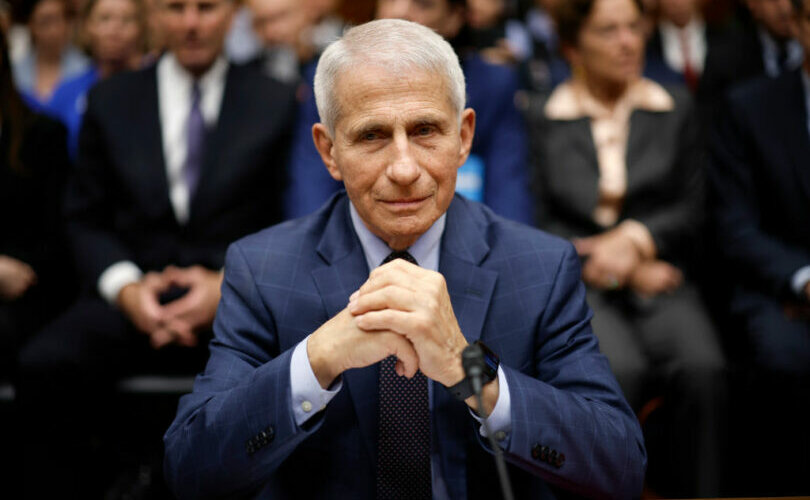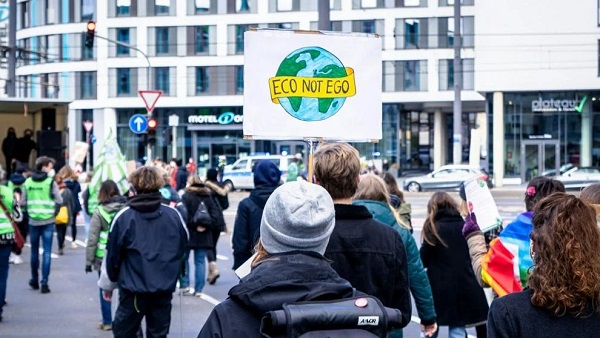Business
My European Favourites – Emilia-Romagna, Italy
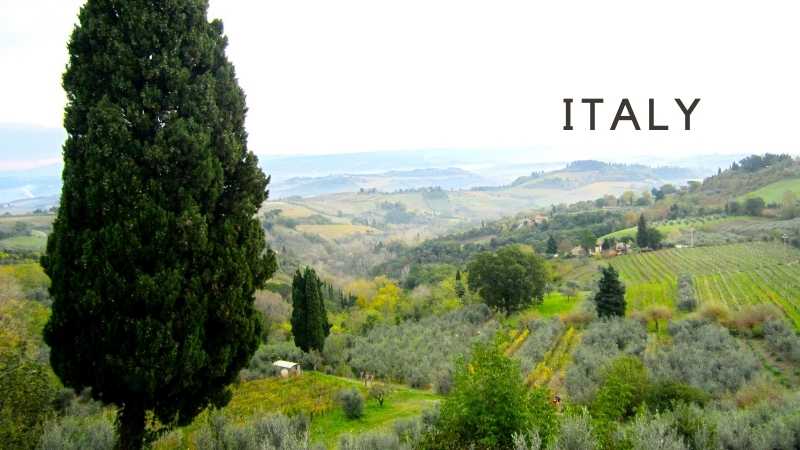

My European Favourites – Emilia-Romagna, Italy
When people think of Italy, the first places that usually come to mind are Rome, Venice, Milan and the region of Tuscany, which includes Florence and Pisa. I would go to any of these places in a heartbeat. I love them all, but a region that many tourists overlook is Emilia-Romagna. The region’s name might not be well known, but its exceptional agricultural, automotive and mechanical sectors are known the world over.
Much of the gastronomy we associate with Italian cuisine has its roots in Emilia-Romagna. The region is famous for Parmigiano Reggiano (Parmesan cheese), Modena balsamic vinegar, Parma ham (prosciutto), and various types of pasta, just to name a few items. If you are a wine lover, Sangiovese and Lambrusco are two of their well-known “vinos” for their unique taste and quality.
If you are a motor sport buff, Ducati motorcycles and luxury car manufacturers Lamborghini, Maserati and Ferrari all have their roots in the area. With this racing heritage, it’s only natural that two major circuits are located in the region. The motorcycle racing Misano World Circuit Marco Simoncelli is located near Misano Adriatico and is named after a local rider who died during a race in Malaysia in 2011. The Autodromo Enzo e Dino Ferrari located in Imola, which has been used for Formula 1 Grand Prix races, is named after Ferrari’s founder and his son. The track is sadly the location where three time World Champion Ayrton Senna of Brazil died in 1994.
It is best to do these tours with Parma as your base in Emilia-Romagna, but I enjoy its capital and largest city, Bologna. The city is Italy’s seventh largest with about 400,000 people, and it is famous for its medieval towers, churches, colonnades and historical city centre. The University of Bologna, which was established in 1088 AD, is the oldest university in the Western world. I love exploring the narrow city centre streets and browsing the food markets and shops with fresh produce, cured meats, fish, breads, pastas and regional products. I’m no chef, but I imagine that it would be sensory overload for any culinary expert. The small restaurants with street front patios make some of the best dishes you will eat in all of Italy. You have to go there.

Bologna’s medieval towers, a colonnade, a street full of restaurants and the Neptune Fountain.
Parmigiano Reggiano
We depart in the morning from our hotel in central Bologna to a family cheese making operation that produces the “king of cheeses,” Parmigiano Reggiano. The just over an hour drive brings us to a farm and factory near the town of Parma. They are members of the consortium that designates and controls authentic Parmigiano Reggiano production. Under law, the designation Parmigiano Reggiano is protected as a PDO (Protected Designations of Origin) and can be used only by certified producers from this area, so consumers know they have the real deal.
Around 1000 AD, monks reclaimed the marshy lands in the Po valley. The fertile land was plowed and worked by the monks using cows. With numerous cows, the monks had to invent a method to preserve the large quantities of high-quality milk they produced into a product that could be stored and used over time. The monks eventually developed a technique to produce a distinctive cheese in large boilers. The large round Parmigiano Reggiano is still made the same way today.
The Minardi family own and operate the Borgo del Gazzano farm factory that we are visiting. As an organic farm, they pay close attention to the entire local supply chain process to ensure the highest quality of ingredients. We arrive as they are reaching their final steps of the boiler process that was perfected by the monks long ago. Two men collect the curd from the boiler using muslin cloth and place it in large round molds. The cheese is left to set for a day or two then the mold will be removed to add a plastic wrap that has the imprint of the famous Parmigiano Reggiano stamp along with the date and the producer’s number. The mold is then reattached over the plastic wrap and tightened. The imprint from the wrap will solidify as a permanent mark on the rind over the next day. The wrap and mold are then removed and the cheese is placed in a rectangular vessel filled with a brine mixture for 20-25 days so that the cheese can absorb salt.

Production boilers, collecting the curd, the cheese freshly set in a mold and the brine bath.
Finally, the cheese is placed on a shelf in the warehouse to age for 12 months. Prepare to be astounded to see row after row of these shelves that are over 20 cheeses high and at least 80 cheeses long per side. It feels like a library made of cheese! Do you hear a mechanical sound coming from the next aisle? It is a machine working its way up, down and across the shelves. Its job is to grab one heavy cheese off the shelf at a time, spin it around so it can brush off the excess bits, flip the cheese, then place it safely back on the shelf, before automatically moving on to the next one. I guess now we know where they get the parmesan cheese shavings for the cheese shakers we buy at our local grocery store.
We will step outside to the barn area to see the cows and dairy operation before moving to the tasting area and shop. Tasting the celebrated “fromaggio,” with its distinctive texture and sharp flavour, at the very place where it is produced is really something special. This is not to be mistaken with the cheese we often get at home, as outside of Europe, companies can only use the word “Parmesan” to describe their cheese. To get the real deal, you have to make sure that it is clearly sold as, or even better, see it stamped as Parmigiano Reggiano.

Parmigiano shelves, the stamp on the rind, the cleaning machine and me with Alfonso Minardi.
Parma Ham (Prosciutto)
Just 30 minutes from the Borgo del Gazzano is a producer that makes another iconic food. The Lanfranchi family are specialists in the making of a cured meat known the world over as Raw Parma Ham (Prosciutto Crudo di Parma). For 20 years, they have been selecting the finest raw materials and using their traditional methods and expertise to produce the finest and tastiest prosciutto, salamis, pancetta, culatello and coppa di parma. Like the Parmigiano Reggiano cheese producers, the Parma Ham producers are also part of a consortium, and as such, must adhere to high standards and follow precise rules of production.
We will get an introduction of the prosciutto making process. Our tour starts with the trimming of the excess fat and rind of the pork thigh to give the ham its rounded shape and to assist in the salting process. The rind is treated with wet salt while the lean parts are sprinkled with dry salt. During a three week period, the ham is salted twice and placed in walk-in freezers with different temperatures. During this period, it slowly absorbs salt, loses moisture, and loses about 4% of its weight.

Our guide explaining the production process, the ham cellar and the “5 point crown” stamp.
In the next stage, the ham’s residual salt is removed and it is placed in a special room with controlled humidity and temperature for just over two months. While in this room, the salt penetrates even deeper and it is reduced by another 8-10%. We continue into a room with windows that are opened for the ham to dry over the next few months in natural process that will result in another weight loss of 8-10%.
The ham’s final move is to the cellar on the seventh month. In the cellar, important biochemical and enzymatic processes occur. Here it loses another 5% of weight but gains the distinct aroma and taste of the Param Ham.

The finished La Perla Prosciutto, a mixed plate of their products and me with Mr. Lafranchi.
At the end of the curing process, the ham is penetrated by a horse bone needle by experts who can verify its quality with a trained sense of smell. Finally, after a twelve month journey, the ham is inspected by the Parma Quality Institute and branded with the “5 pointed crown” as a guarantee to the consumer that the product is of the highest quality.
The tour gives us a great appreciation for the care that goes into making these products, and underscores why they are highly sought after. We move to the La Perla tasting room where we can try some of the local wines while enjoying lunch, which of course, includes pasta, cured meats, prosciutto, Parmesan cheese, bread and a dessert. It is always tough to get a group to leave because the Lafranchi family are great hosts who love to meet people from around the world. But we must leave, as one hour away, is a mecca for car enthusiasts.

The red arch at the Ferrari Museum entrance, the Ferrari 330 P3 and the AF Corse # 51.
Ferrari Museum
As we arrive at Maranello, we are greeted by a traffic circle that has a familiar silver prancing horse in the middle. This is undeniably, the home of Ferrari. Founded by Enzo Ferrari in 1929 as Scuderia Ferrari, the company sponsored drivers and manufactured race cars before moving into production of street-legal vehicles as Ferrari S.p.A. in 1947.
As we arrive to the Museum, we see a F1 race car in what looks like scaffolding and a welcoming bright red arch. Ferrari is the most successful Formula 1 team in history and has millions of loyal and exuberant fans worldwide. The motorsports cars in the museum are dedicated to the 90 years of Ferrari racing heritage. The cars will take your breath away.

The “Prancing Horse” logo, a 1950’s vintage race car and a classic Ferrari.
My favourite area of the museum is the Michael Schumacher exhibition dedicated to his 11 years of racing with Ferrari. The room has some of his F1 race cars on display in an awe-inspiring semi-circle with a video wall in the background playing highlights of his career. On the other side of the room is a lower wall dedicated to Ferarri champion drivers and an upper wall full of shiny trophies.

A few F1 cars from the Michael Schumacher exhibition, Ferrari champions and the trophies.
In addition to the racing automobiles, the museum also displays its most famous street cars through history, including the iconic Ferrari Testarossa. The Ferrari shop is full of items with the iconic item emblazoned on them, but like the high performance cars, they are pricey.

A Ferrari Portofino, a LaFerrari Aperta, and the Ferrari 5999 HY-KERS test “MULOTIPO.”
With your adrenalin pumping from being surrounded by automotive power, you will be ready to try a couple of unique experiences. If you are mechanically inclined, you will love the Pit Stop Experience, where they time you as you make a front tire change on a Formula 1 car. Those that “feel the need for speed” will drool at the sight of the unbelievable Scuderia Ferrari F1 simulators. After you climb into the pilot’s cockpit, you are given a brief explanation of how to use the paddles behind the steering wheel and the gear box. They can set up the simulator for regular driver or in a more advanced mode for “professionals.” You even get to choose one of the famous F1 tracks for your race experience. The simulator lets you feel the track surface including rubbing strips feel the breaking and throttle forces.
If you are interested, you can combine the museum ticket with a tour of the Ferrari track and factory. For the duration of the tour, you must remain on the company’s shuttle buses and no photos or video are allowed. The factory entrance has been kept the same as it was in 1947 and the track is where all of Ferrari’s competition and road cars have been tested since 1972.
Those that want to get behind the wheel can go to the nearby Autodromo di Modena race circuit and drive a Ferrari for 15 minutes or longer. The experience includes track information and safety protocols from a professional driver.

The tire changing Ferrari Pit Stop Experience and the Formula 1 racing simulators.
Balsamic Vinegar
After the heart racing Ferrari experience, we make a short early evening drive to a Balsamic Vinegar producer or “Acetaia” that was founded in the 1800s. The Paltrinieri Acetaia, established in 1845, maintains the family tradition and replenishes over 1000 barrels of balsamic using the experience handed down generation after generation. Adhering to the strict regulations and using local ingredients from the Trebiano and Lambrusco vineyards, Guido Paltrinieri guides the production of the vinegar must.
The company harvests 160,000 kilograms of grapes on their 25 acre farm, which produces 15,000 litres of balsamic vinegar. We will visit the warehouse attic to see the medium sized barrels made from durmast, chestnut, mulberry, cherry, acacia, ash and precious juniper wood.
The flavour garnered from the barrels, along with the aging process, result in the unique scent and flavour of the balsamic. In the tasting room, we try a range of balsamic they produce, and it is amazing how varied the taste can be in terms of the sweet and sour tones. They also vary in density. The denser the vinegar, the more of a syrupy texture it has. Mind you, this is not the balsamic you find at your local grocery store. A high quality Modena balsamic in a 100 ml bottle, and aged up to 25 years, can cost hundreds of dollars. The company also produces balsamic based products like Balsamotto, Acet-Up, Dulcia and Saba which are great for use in cooking or as a condiment, including on ice cream!

The Acetaia’s barrel sign, processing equipment, barrels of balsamic and the tasting room.
One of my favourite meals in Italy is at the Acetaia Paltrinieri restaurant. After our balsamic tasting and tour, we head across the courtyard to the rustic farm house restaurant. Just before we arrive to the restaurant doors, we are greeted with a glass of Pignoletto sparkling wine and crumbled Parmigiano Reggiano drizzled with DOP Modena Balsamic Vinegar. The balsamic and the cheese go so well together.

The Acetaia’s courtyard, restaurant entrance, Parmigiano with balsamic and their products.
Once inside, we are greeted with bottles of Lambrusco wine on the table, which everyone is quick to spot and partake in. Soon, a plate of a local flatbread called “tigelle” similar to an English muffin, and served warm, arrives with a spread. They are so good!
I have had two different first courses, and I’m not sure which I love more. One is a creamy risotto made with “riserva” balsamic vinegar, and the other is a pasta called Strozzapreti or “choke the priest” pasta. The name always makes me laugh, but the pasta, which also contains balsamic, is absolutely fantastic.
The second course is a meat course which is served with vegetables or salad. During my previous visits, I’ve enjoyed stuffed roast pig, chicken with ham or Balsamotto roast beef, with each dish including balsamic as an ingredient. Even my ice cream dessert contains balsamic. After a glass of a special local walnut liqueur called “nocino” or a nice espresso, we are on our way back to Bologna. It will be a late return to our hotel in Bologna but I’m sure we will venture out to find a nice place in the historic city centre to have a glass of wine and to talk about our amazing day in Emilia-Romagna.
Explore Europe With Us
Azorcan Global Sport, School and Sightseeing Tours have taken thousands to Europe on their custom group tours since 1994. Visit azorcan.net to see all our custom tour possibilities for your group of 26 or more. Individuals can join our “open” signature sport, sightseeing and sport fan tours including our popular Canada hockey fan tours to the World Juniors. At azorcan.net/media you can read our newsletters and listen to our podcasts.
Images compliments of Paul Almeida and Azorcan Tours.
Click here to read more of Paul’s travel series on Europe.
2025 Federal Election
MEI-Ipsos poll: 56 per cent of Canadians support increasing access to non-governmental healthcare providers

-
Most believe private providers can deliver services faster than government-run hospitals
-
77 per cent of Canadians say their provincial healthcare system is too bureaucratic
Canadians are increasingly in favour of breaking the government monopoly over health care by opening the door to independent providers and cross-border treatments, an MEI-Ipsos poll has revealed.
“Canadians from coast to coast are signalling they want to see more involvement from independent health providers in our health system,” explains Emmanuelle B. Faubert, economist at the MEI. “They understand that universal access doesn’t mean government-run, and that consistent failures to deliver timely care in government hospitals are a feature of the current system.”
Support for independent health care is on the rise, with 56 per cent of respondents in favour of allowing patients to access services provided by independent health entrepreneurs. Only 25 per cent oppose this.
In Quebec, support is especially strong, with 68 per cent endorsing this change.
Favourable views of accessing care through a mixed system are widespread, with three quarters of respondents stating that private entrepreneurs can deliver healthcare services faster than hospitals managed by the government. This is up four percentage points from last year.
Countries like Sweden and France combine universal coverage with independent providers and deliver faster, more accessible care. When informed about how these health systems run, nearly two in three Canadians favour adopting such models.
The poll also finds that 73 per cent of Canadians support allowing patients to receive treatment abroad with provincial coverage, which could help reduce long wait times at home.
Common in the European Union, this “cross-border directive” enabled 450,000 patients to access elective surgeries in 2022, with costs reimbursed as if they had been treated in their home country.
There’s a growing consensus that provincial healthcare systems are overly bureaucratic, with the strongest agreement in Alberta, B.C., and Quebec. The proportion of Canadians holding this view has risen by 16 percentage points since 2020.
Nor do Canadians see more spending as being a solution: over half say the current pace of healthcare spending in their province is unsustainable.
“Governments shouldn’t keep doubling down on what isn’t working. Instead, they should look at what works abroad,” says Ms. Faubert. “Canadians have made it clear they want to shift gears; now it’s up to policymakers to show they’re listening.”
A sample of 1,164 Canadians aged 18 and older was polled between March 24th and March 28th, 2025. The margin of error is ±3.3 percentage points, 19 times out of 20.
The results of the MEI-Ipsos poll are available here.
* * *
The MEI is an independent public policy think tank with offices in Montreal, Ottawa, and Calgary. Through its publications, media appearances, and advisory services to policymakers, the MEI stimulates public policy debate and reforms based on sound economics and entrepreneurship.
Education
Schools should focus on falling math and reading skills—not environmental activism

From the Fraser Institute
In 2019 Toronto District School Board (TDSB) trustees passed a “climate emergency” resolution and promised to develop a climate action plan. Not only does the TDSB now have an entire department in their central office focused on this goal, but it also publishes an annual climate action report.
Imagine you were to ask a random group of Canadian parents to describe the primary mission of schools. Most parents would say something along the lines of ensuring that all students learn basic academic skills such as reading, writing and mathematics.
Fewer parents are likely to say that schools should focus on reducing their environmental footprints, push students to engage in environmental activism, or lobby for Canada to meet the 2016 Paris Agreement’s emission-reduction targets.
And yet, plenty of school boards across Canada are doing exactly that. For example, the Seven Oaks School Division in Winnipeg is currently conducting a comprehensive audit of its environmental footprint and intends to develop a climate action plan to reduce its footprint. Not only does Seven Oaks have a senior administrator assigned to this responsibility, but each of its 28 schools has a designated climate action leader.
Other school boards have gone even further. In 2019 Toronto District School Board (TDSB) trustees passed a “climate emergency” resolution and promised to develop a climate action plan. Not only does the TDSB now have an entire department in their central office focused on this goal, but it also publishes an annual climate action report. The most recent report is 58 pages long and covers everything from promoting electric school buses to encouraging schools to gain EcoSchools certification.
Not to be outdone, the Vancouver School District (VSD) recently published its Environmental Sustainability Plan, which highlights the many green initiatives in its schools. This plan states that the VSD should be the “greenest, most sustainable school district in North America.”
Some trustees want to go even further. Earlier this year, the British Columbia School Trustees Association released its Climate Action Working Group report that calls on all B.C. school districts to “prioritize climate change mitigation and adopt sustainable, impactful strategies.” It also says that taking climate action must be a “core part” of school board governance in every one of these districts.
Apparently, many trustees and school board administrators think that engaging in climate action is more important than providing students with a solid academic education. This is an unfortunate example of misplaced priorities.
There’s an old saying that when everything is a priority, nothing is a priority. Organizations have finite resources and can only do a limited number of things. When schools focus on carbon footprint audits, climate action plans and EcoSchools certification, they invariably spend less time on the nuts and bolts of academic instruction.
This might be less of a concern if the academic basics were already understood by students. But they aren’t. According to the most recent data from the Programme for International Student Assessment (PISA), the math skills of Ontario students declined by the equivalent of nearly two grade levels over the last 20 years while reading skills went down by about half a grade level. The downward trajectory was even sharper in B.C., with a more than two grade level decline in math skills and a full grade level decline in reading skills.
If any school board wants to declare an emergency, it should declare an academic emergency and then take concrete steps to rectify it. The core mandate of school boards must be the education of their students.
For starters, school boards should promote instructional methods that improve student academic achievement. This includes using phonics to teach reading, requiring all students to memorize basic math facts such as the times table, and encouraging teachers to immerse students in a knowledge-rich learning environment.
School boards should also crack down on student violence and enforce strict behaviour codes. Instead of kicking police officers out of schools for ideological reasons, school boards should establish productive partnerships with the police. No significant learning will take place in a school where students and teachers are unsafe.
Obviously, there’s nothing wrong with school boards ensuring that their buildings are energy efficient or teachers encouraging students to take care of the environment. The problem arises when trustees, administrators and teachers lose sight of their primary mission. In the end, schools should focus on academics, not environmental activism.
-

 2025 Federal Election2 days ago
2025 Federal Election2 days agoCSIS Warned Beijing Would Brand Conservatives as Trumpian. Now Carney’s Campaign Is Doing It.
-

 2025 Federal Election2 days ago
2025 Federal Election2 days agoInside Buttongate: How the Liberal Swamp Tried to Smear the Conservative Movement — and Got Exposed
-

 Alberta2 days ago
Alberta2 days agoMade in Alberta! Province makes it easier to support local products with Buy Local program
-

 International2 days ago
International2 days agoTulsi Gabbard tells Trump she has ‘evidence’ voting machines are ‘vulnerable to hackers’
-
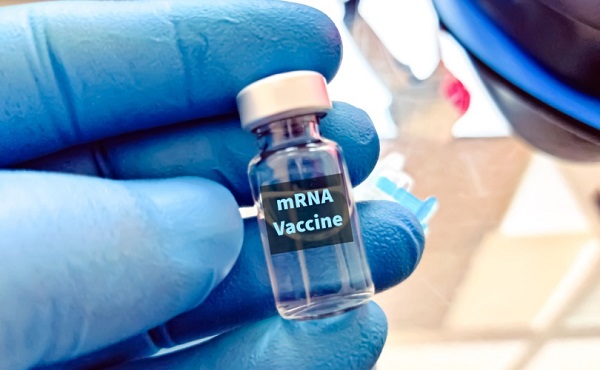
 COVID-191 day ago
COVID-191 day agoCOVID virus, vaccines are driving explosion in cancer, billionaire scientist tells Tucker Carlson
-

 Health1 day ago
Health1 day agoHorrific and Deadly Effects of Antidepressants
-

 Bruce Dowbiggin1 day ago
Bruce Dowbiggin1 day agoIs HNIC Ready For The Winnipeg Jets To Be Canada’s Heroes?
-
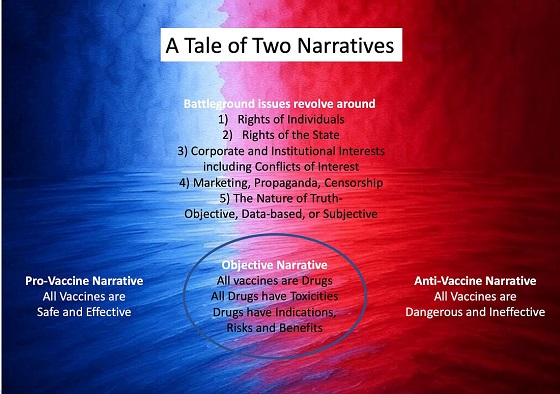
 Dr. Robert Malone1 day ago
Dr. Robert Malone1 day agoThe West Texas Measles Outbreak as a Societal and Political Mirror










